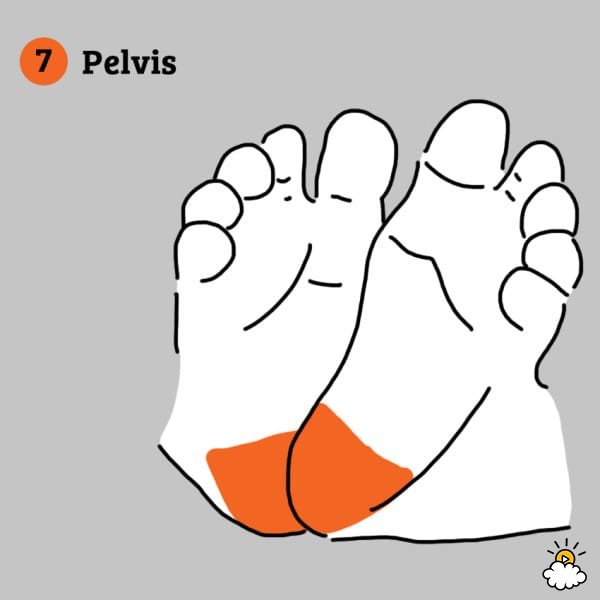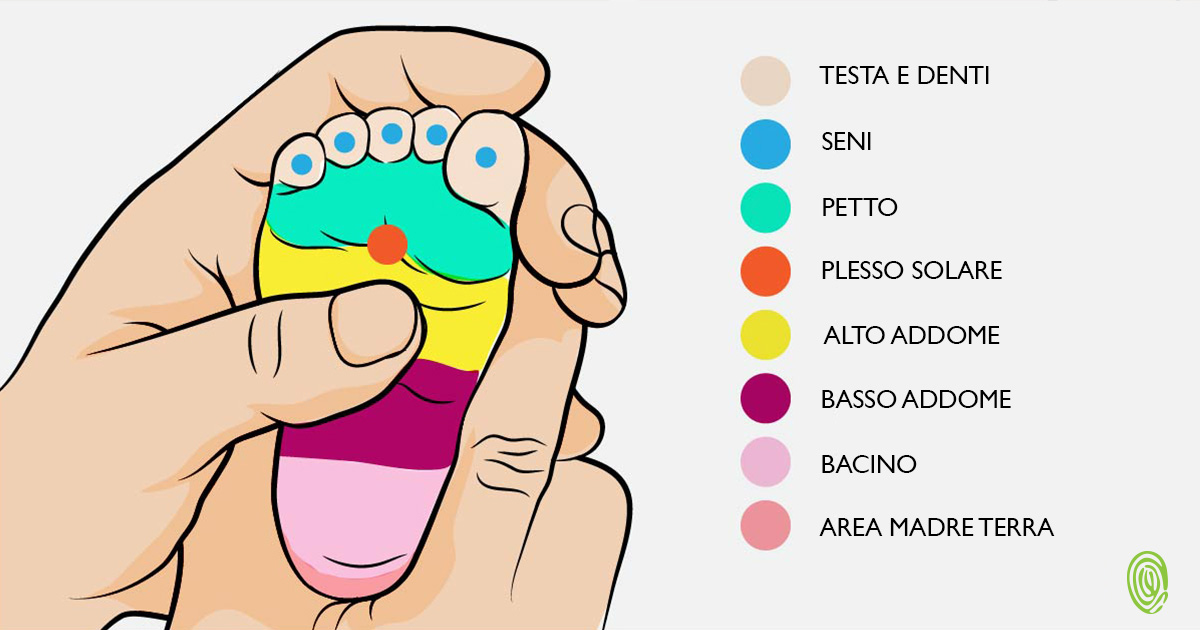The reflexology applied to children can be a great tool to reduce little big newspapers disorders of infants. Here’s how to do the massage and the points indicated according to the different problem.
Massaging the feet is a relaxing and beneficial system to stimulate the nerve endings and consequently to reach organs and other areas of the body that would be reflected on the sole but also on the back of both feet. Knowing the map of foot reflexology it is possible to treat the internal body and tone the system.
All this is also true for newborns who can benefit from delicate massages to be performed on specific points, identified on the basis of the problem to be treated. This type of reflexology is particularly suitable for children from birth and up to 2 years of age, when ailments frequently appear which make the little ones restless: colic, appearance of teeth, reflux, constipation, etc.
Index
Benefits for newborns
This technique can be used to promote the natural healing of the body of children in case of common ailments (this obviously does not replace the opinion of the pediatrician and the possible use of drugs or other remedies) but also as a preventive tool to ensure a greater degree of well-being for infants and young children.
Foot reflexology is able to help digestion, reduce intestinal gas, alleviate pain, stimulate circulation, relax the nervous system, increase the natural defenses of our body and it is therefore a natural system that can be experienced in case of :
- colic
- reflux
- constipation
- painful teething
- restless sleep
- cold
The benefits could be immediate or rapid (small children generally respond quickly enough to stimulation) or slower. However, continue for a few weeks to see the long-term effect.
How to practice massage
In order to harness the power of reflexology on infants and young children, gentle movements are required. In case of recurrent problems, such as reflux or colic, you can also practice the massage every day for several weeks and when the situation improves it can be reduced to a couple of times a week.
The advantage is that the massage can be performed at any time and place: when the child is in his arms, tied on the seat in the car, in the cradle or in the cot, etc. The best moments are, however, when he sleeps, while eating, is taking a bath or is in the band.
However, it is good that the child is in a moment of relaxation. If you notice movements of the feet as if to free yourself (a sign that you don’t like) it is better to stop and try to stimulate at another time.
Proceed by starting with gentle massages on the whole foot to be carried out with the thumb on the sole while the other toes will have a supporting function. After a short massage / caress on the whole foot, focus on the area that you want to stimulate more depending on the problem.
It is important at this point to know the fundamental points.
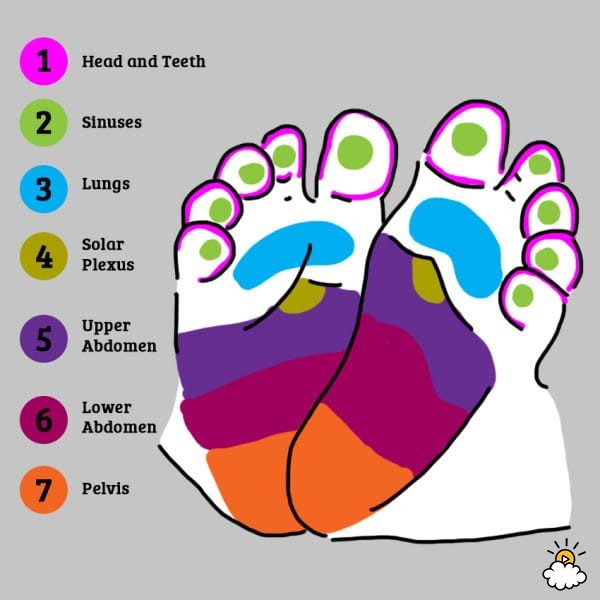
Foot steps from massaging
Depending on the goal you want to achieve, specific points of the foot will be massaged.
Let’s see the most frequent situations and the relative areas of the foot one by one:
Teething (head and teeth area)
Teething can create great ailments for children and also lead to the appearance of side effects such as fever and diarrhea as well as inflamed gums and pain. After massaging the sole of the foot quickly as heating, concentrate with a massage of about 5 minutes on the points that correspond to the teeth or the fingertips.
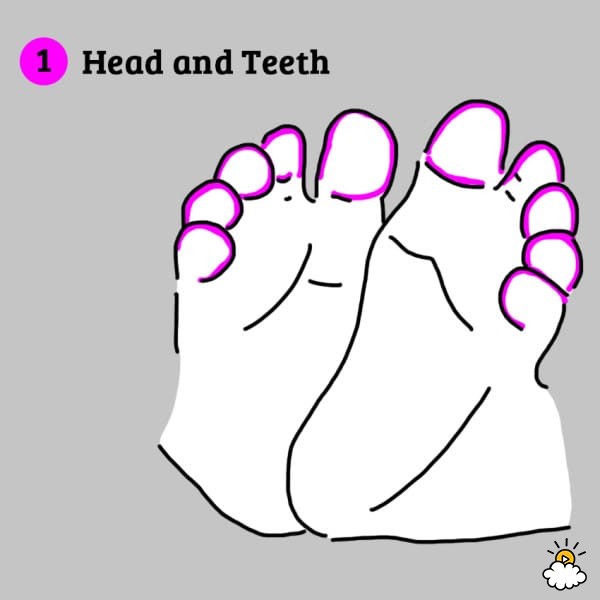
Cold (nasal sinus area and lung area)
Massaging the area corresponding to the nasal sinuses can help in case of cold, stuffy nose or sinusitis. It is also possible to stimulate the part of the foot which, reflexologically speaking, corresponds to the bronchi and lungs, that is, the part immediately below the junction of the toes.
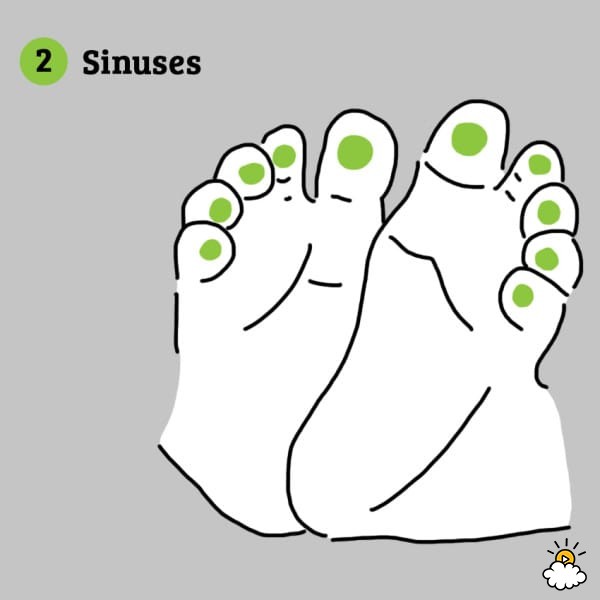
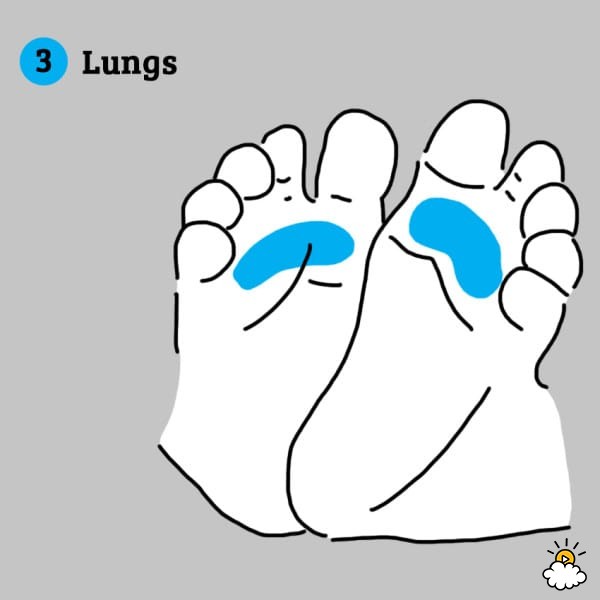
Promote relaxation (solar plexus area)
The point of the solar plexus can be massaged to relax the baby to the maximum, promoting night-time rest but also within a treatment aimed at improving digestive functions.
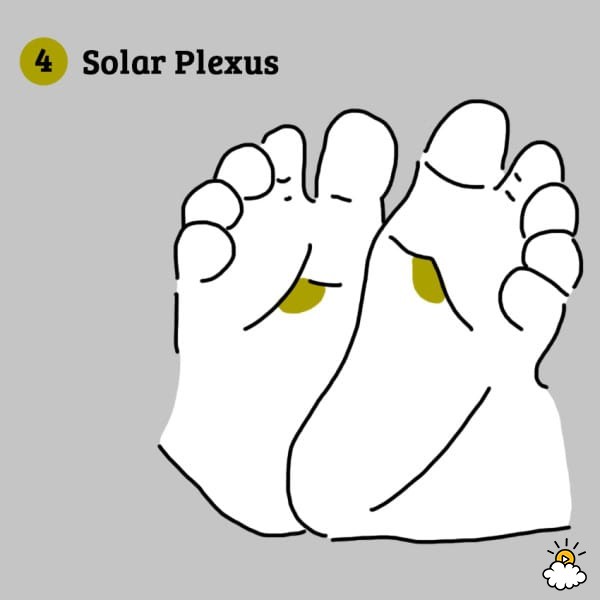
Reflux and constipation (upper abdomen)
Regularly massaging the foot can help alleviate the reflux problem and improve any constipation problem.
The area of the foot to be treated is that which corresponds to the upper part of the abdomen. Doing so will also improve digestive functions and relieve any burning.
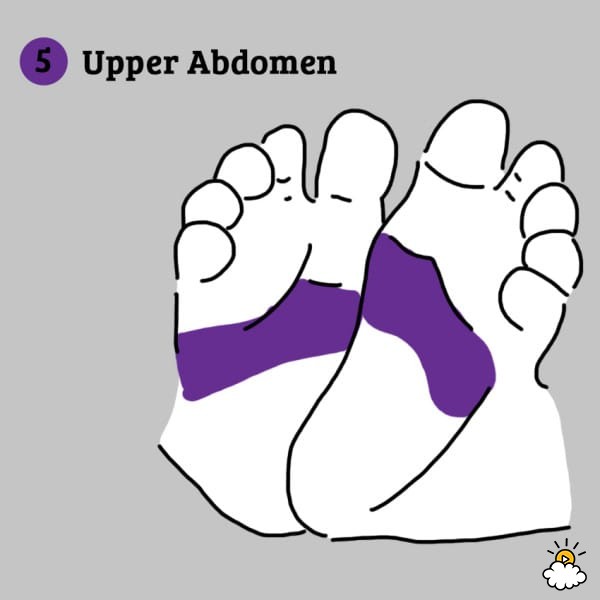
Colic (lower abdomen)
A gentle 5-minute foot massage can help relieve colic. It should be massaged from the base to the point where the toes join the foot, thus covering the pelvic and abdominal areas. You can use your right thumb to work on the entire affected area by making a gentle passage 2 or 3 times.
Improving the circulation in these areas helps the absorption of nutrients in the digestive system and the elimination of waste. In some cases, the baby’s intestines may also be heard bubbling, a symptom that the massage is working.
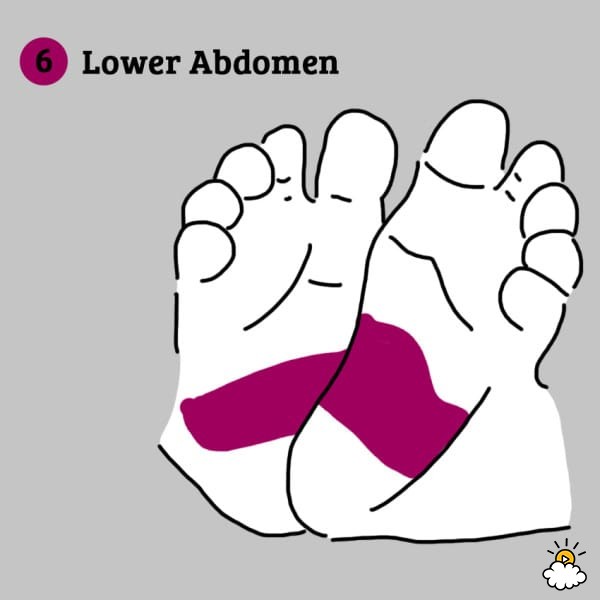
Posture problems (pelvic area / pelvis)
The lower part of the sole of the foot corresponds to the pelvic area and the hips, so you can massage in case the little one has some posture problems but stimulation can also help in case of constipation.
